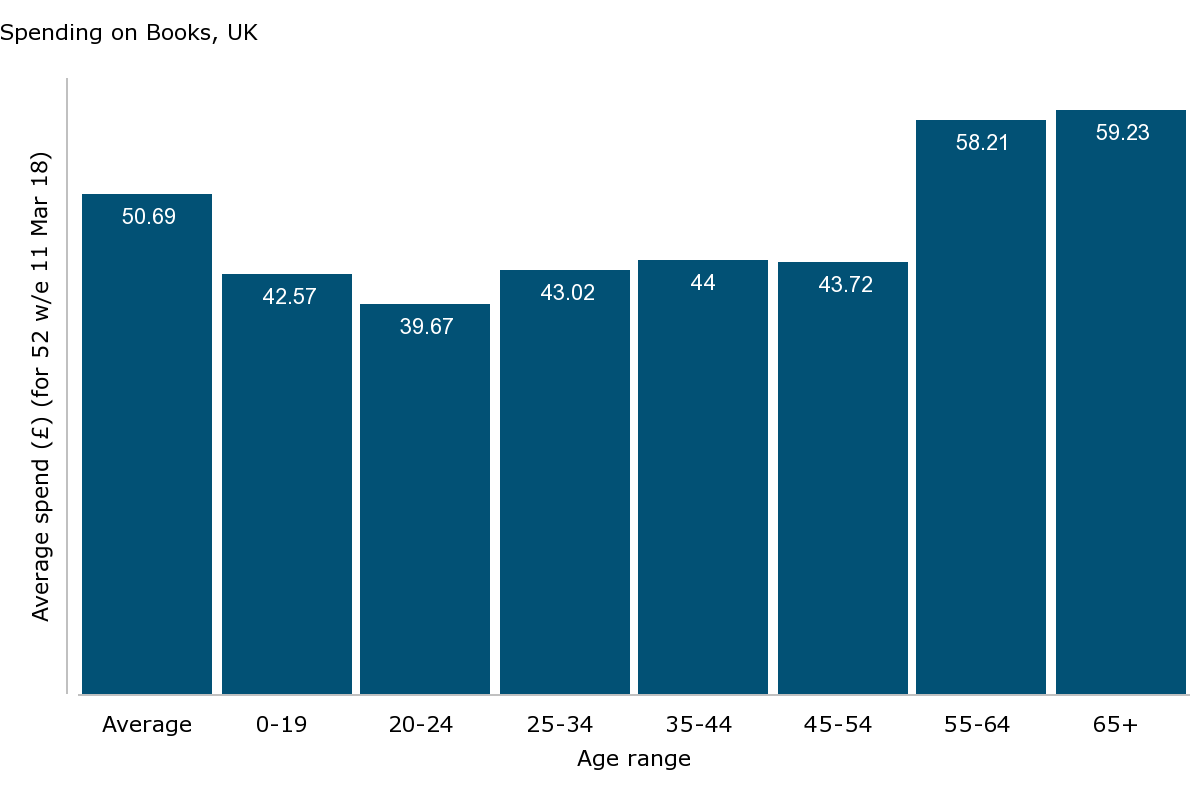
Are people still reading physical books?
According to TGI consumer data from Kantar Media, 56% of UK adults say they have read a book in the last year. And it was most likely a physical book, as far more people are reading (and buying) these than their digital counterparts.
In the TGI data from January this year, 37% of those adults who read books are categorised as ‘heavy readers’ – those who have read 10 or more books in the past year. Olivia Moore, Client Manager – Entertainment & Telecoms at Kantar Worldpanel, confirms this is a growing trend: ‘The average shopper now spends £50.69 on hardbacks and paperbacks (*data from 52 w/e 11 March 2018), up 5% year-on-year. In the last year we’ve bought an average of 4.6 books each, compared to 4.3 for the year up to 13 March 2016.’
What are people reading?
James Powell, Senior Marketing Manager at Kantar Media, highlights that there are big differences in book preferences based on gender and age. ‘Men are 41% more likely than the average book reader to read science fiction and over twice as likely to read about sports, whilst women are 21% more likely to read books on health, wellbeing & self-improvement and 61% more likely to read romance novels.’
‘Age shows similar variations. Those aged 15 to 24 are almost twice as likely to read fantasy and adventure books and 35% more likely to read science fiction. But those aged 65 or over are 34% more likely to read about home, gardening and DIY, and 29% more likely to read historical fiction.’
Who are the heavy readers?
The 37% of book-reading adults who are ‘heavy readers’ are particularly likely to be in their later years, according to TGI data – they are 23% more likely than the average reader to be aged 65 or over. Kantar Worldpanel data indicates that those in this age group are also more frequent book shoppers (an average of 6 book purchases in the year), and accounted for more than a quarter of spend in the hardback and paperback market in the last year. They also spend £59.23 on physical books (which is the highest of any age group) and spend 17% more than the average (£50.69) on books each year.

15 to 24 year olds are 30% less likely than the average reader to be heavy readers, according to TGI data, with only 36% of them reading 10 or more books per year.
Powell notes: ‘Senior Sole Decision Makers (aged 55 or over, not married or living as a couple, and living alone) are 26% more likely to be heavy readers, but Flown the Nest-ers (aged 15-34, not married or living as a couple and do not live with relations) are 29% less likely.’
And where are they buying books? 71% of ‘heavy readers’ say they buy their books online, whilst 57% do so in a shop and 4% via mail order.
What about e-books?
It would seem that although ecommerce is a popular channel, the most popular product is still a physical as opposed to digital book. Nearly 40% of people in the UK have bought a paperback or hardback in the last year; just 10% have purchased an eBook, according to Kantar Worldpanel purchase data. Reading habits follow a similar trend, based on the TGI data.